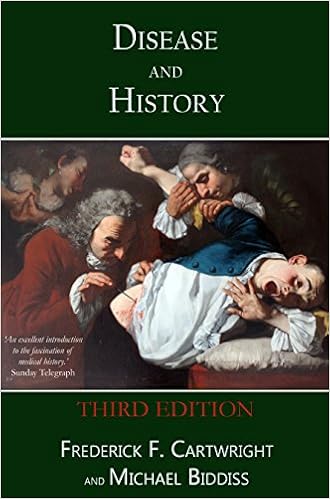How Tuberculosis Shaped Victorian Fashion
The deadly disease—and later efforts to control it—influenced trends for decades
Emily Mullin | May 10, 2016
The Victorians romanticized the disease and the effects it caused in the gradual build to death. For decades, many beauty standards emulated or highlighted these effects. And as scientists gained greater understanding of the disease and how it was spread, the disease continued to keep its hold on fashion. [...]
 |
| "The long, trailing skirts of the Victorian period eventually fell out of favor when they were thought to harbor tuberculosis microbes. (via Wikicommons)" Source: http://www.smithsonianmag.com/science-nature/how-tuberculosis-shaped-victorian-fashion-180959029/?no-ist |
 |
| "Arising from collaboration between a doctor and a historian, Disease and History offers the general reader a wide-ranging and most accessible account of some of the ways in which disease has left its often dramatic mark on the past. " Source: https://www.amazon.com/Disease-History-Frederick-F-Cartwright-ebook/dp/B00MEB1SH2?ie=UTF8&keywords=history%20of%20disease&qid=1462977658&ref_=sr_1_2&sr=8-2 |
<more at http://www.smithsonianmag.com/science-nature/how-tuberculosis-shaped-victorian-fashion-180959029/?no-ist; related articles and links: http://health.usnews.com/health-news/articles/2008/01/03/12-diseases-that-altered-history (12 Diseases That Altered History. Syphilis, hemophilia, and potato blight are among the ills that have changed the world. June 3, 2008) and http://www.ncbi.nlm.nih.gov/pmc/articles/PMC2775759/ (CHANGES in SKIN TANNING ATTITUDES. Fashion Articles and Advertisements in the Early 20th Century. Jo M. Martin, Jessica M. Ghaferi, Deborah L. Cummins, Adam J. Mamelak, Chrys D. Schmults, Mona Parikh, Lark-Aeryn Speyer, Alice Chuang, Hazel V. Richardson, David Stein, and Nanette J. Liégeois. American Journal of Public Health. 2009 December; 99(12): 2140–2146. doi: 10.2105/AJPH.2008.144352. [Abstract: Historical reviews suggest that tanning first became fashionable in the 1920s or 1930s. To quantitatively and qualitatively examine changes in tanning attitudes portrayed in the popular women's press during the early 20th century, we reviewed summer issues of Vogue and Harper's Bazaar for the years 1920, 1927, 1928, and 1929. We examined these issues for articles and advertisements promoting skin tanning or skin bleaching and protection. We found that articles and advertisements promoting the fashionable aspects of tanned skin were more numerous in 1928 and 1929 than in 1927 and 1920, whereas those promoting pale skin (by bleaching or protection) were less numerous. These findings demonstrate a clear shift in attitudes toward tanned skin during this period.])>

No comments:
Post a Comment